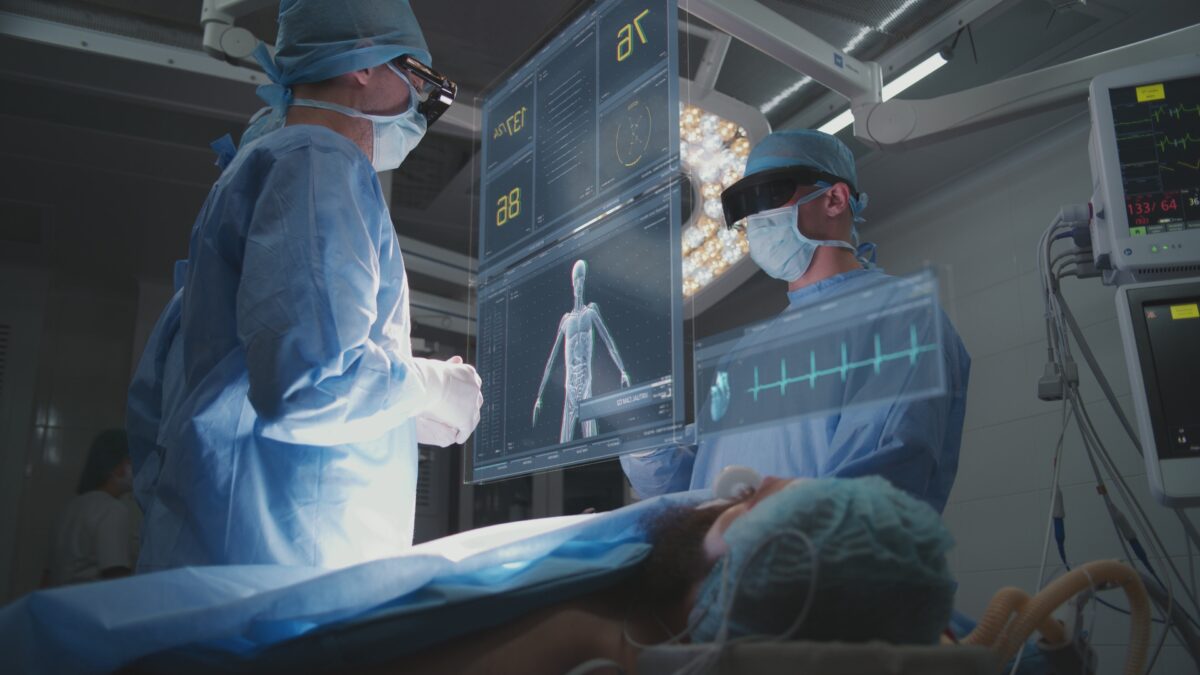Artificial intelligence (AI) refers to technologies that enable computers and robots to mimic human intelligence. Read more: https://pace-cr.com/news/artificial-intelligence-in-health-benefits-limitations-and-risks/. AI is rapidly advancing and transforming medicine, a trend accelerated by the Covid-19 pandemic. AI technologies analyse various types of health data, including clinical, behavioural, environmental, drug information, data from biomedical literature and patients. These advancements aim to enhance the speed and accuracy of diagnosis and therapy, improve imaging methods, assist doctors and patients in surgery, facilitate drug research, and enable more personalised treatments.
The integration of AI in medicine is growing, driven by these advancements. However, ethical concerns persist, such as data security risks, changes in the patient-physician relationship, potential social inequalities, and the risk of AI replacing many professional tasks, leading to higher unemployment rates. Read more: https://pace-cr.com/news/artificial-intelligence-in-health-benefits-limitations-and-risks/
For medical students, gaining adequate knowledge and skills in AI applications is crucial, as they may need to use technologies that were not available during their education. The World Medical Association advocates for revising medical curricula and providing educational opportunities for patients, physicians, medical students, health administrators, and other healthcare professionals to understand the various aspects of AI in healthcare, both positive and negative.
AI in medical education
AI is revolutionising the healthcare industry, especially medical education, by offering personalised and adaptive learning experiences, enhancing diagnostic accuracy, and supporting data-driven decision-making. Traditionally, medical education has been a one-size-fits-all approach, requiring students to memorise large volumes of information. AI, however, can tailor learning to individual needs, allowing students to focus on areas where they need more practice. It also helps instructors create customised learning programmes, monitor progress, and provide real-time feedback.
In behavioural health, virtual reality (VR) is used to create immersive environments where students can practice skills in scenarios that mimic real-world situations. This helps them understand patients’ psychological and emotional needs, fostering empathy and effective communication. In ophthalmology, machine learning and deep learning technologies (https://pace-cr.com/news/artificial-intelligence-in-health-benefits-limitations-and-risks/) assist students in recognising and diagnosing eye diseases from medical images. These technologies enable pattern recognition and learning from large datasets, improving diagnostic accuracy and decision-making.
In orthopaedics, machine learning and deep learning training predict patient outcomes, optimise treatment plans, and identify potential complications. These technologies aid in preoperative planning, diagnosis, and predicting patient outcomes in surgery, while robotics training helps develop surgical skills, improve precision, and minimise errors. VR creates realistic surgical simulations, allowing students to practice techniques in a safe environment.
Additionally, VR is employed in medicine to simulate various medical procedures, enabling students to gain experience and improve their clinical decision-making without the risks of real-life procedures. In training labs, machine learning, deep learning and VR are widely used to provide personalised learning experiences by analysing student performance and identifying areas for improvement.
This indicates the adaptability of AI technologies, allowing them to be tailored to specific fields and educational requirements, significantly enhancing medical education.
An educational revolution is underway
Incorporating AI into medical education has the potential to transform traditional teaching methods by providing personalised, adaptive learning experiences. AI-driven tools can identify students’ strengths and weaknesses, enabling the development of customised learning plans that focus on specific areas for improvement. This targeted approach can enhance knowledge retention and skill development, resulting in better-prepared healthcare professionals.
One significant advantage of AI in medical education is its ability to provide real-time feedback and assessment. Students can track their progress, pinpoint areas of weakness, and receive immediate guidance for improvement. Instructors also benefit from AI-generated analytics, which help identify trends and patterns in student performance, allowing them to adjust teaching strategies and optimise the learning process.
Despite these promising advancements, there are still areas that require further research. These include understanding the long-term effects of AI-assisted learning on student performance, evaluating the impact of AI-driven tools on instructor-student interactions, and addressing the ethical considerations of using AI in medical education.
Conclusion
With the growing implementation of AI technologies in medicine, today’s medical students will face a significantly different work environment. The recent pandemic has accelerated this transformation, highlighting the urgent need for changes in medical education and healthcare delivery. However, many students currently lack structured or standardised education about AI, leaving them feeling unprepared.
Incorporating AI into medical education is essential to ensure that future healthcare professionals possess the skills needed to provide high-quality care.
Veronique Ropion, MD
Strategic Projects Director, Pharmalys Ltd
References:
- Murat Civaner M et al. Artificial intelligence in medical education: a cross-sectional needs assessment BMC Medical Education (2022) 22:772. https://doi.org/10.1186/s12909-022-03852-3
- Nagi F. et al. Applications of Artificial Intelligence (AI) in Medical Education: A Scoping Review. Healthcare Transformation with Informatics and Artificial Intelligence J. Mantas et al. (Eds.) © 2023 The authors and IOS Press. doi:10.3233/SHTI23058

